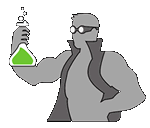Calves can be extremely tough to develop. For me, it's the hardest muscle group to get any growth in. And to be quite honest, after years of trying unsuccessfully to really build calves, I've tended to neglect direct calf training.
This exercise is going to change that.
The calf raise is much more complex than a simple up and down movement. It has points where the leverage changes substantially and you're forced to use only what your calves can handle in the weakest portion of the exercise, which limits loading and overall growth.
How To Use a Safety Squat Bar For Self-Spotted Calf Raises...
For this exercise, you'll need a few pieces of equipment... a safety squat bar, a power rack, another empty bar and a calf block.
The safety squat bar (a.k.a. yoke bar) is going to allow you to have weight on your back hands-free while you use the other bar to grip on and spot yourself in various portions of the exercise.
Set the rails in the rack to a little below shoulder height. Set the calf block (I'm using a small Step riser as a calf block) inside the rack. Set the empty bar at about eye height in the J hooks of the rack. Load the yoke bar with a moderate weight - I've got a pair of 45's on either side.
Get under the yoke bar, reach up and grab the empty bar in front of you with an underhand grip (like a chin-up grip), then get your feet set on the calf block.
Now stand up with the weight and you're in the bottom position of the standing calf raise.

Start the exercise, raising your heels using calf contraction, just like you would with a normal calf raise in a machine. Don't spot yourself during this portion as this is the stronger part of the exercise. You should be able to move this load on your own.
When you get about 3/4 of the way to the top, this is where the leverage changes quite a bit and where many people end the rep and come back down. It's NOT the peak contracted position, though.

This is where you're going to use your lats and biceps to assist and PULL yourself into the ACTUAL peak contracted position of the calf raise.
You'll take off only as much load off the calves as is necessary to achieve that peak contraction.

Once you've hit that top position, release some or all of the help from your upper body and hold that position for a few seconds. You should feel a massive contraction in the calves.
Now lower slowly and under control back down to the bottom. Your calves will be stronger on the eccentric, so make sure to control the descent.
Here's where this Safety Squat Bar Calf Raise exercise gets even tougher...
When you're in that full stretch position in the bottom, try to lift (e.g. do a shoulder press) with the barbell that you're holding onto in front of you. You won't have much leverage to actually lift it, but the act of pushing up with your hands will increase the stretch loading on your calves.
While you're getting that extra loading you want to be actively contracting your calves...a.k.a. loaded stretching. Don't exert enough effort to start moving the weight...just enough to get like a fraction of an inch out of the bottom. Push HARD against the bar with your upper body.
After about 5 seconds or so, release the resistance in your upper body and perform another calf raise. Again, spot yourself into the top position. Then repeat the cycle.
This exercise, and it's ability to adjust loading on the fly like this, will give you a massive pump in your calves, even if you've had a hard time achieving that before.
As I mentioned before, my calves are not great. They'll never be huge, but I believe this exercise has the potential to improve them substantially.
You can also use the squeeze-in trick for this exercise to help ramp up the tension even more.
---
Are you 40...50...60 or even 70+ years old and want to build muscle and strength like you did 20 years ago?
If you feel like you're fighting a losing battle, you're ready to discover the REAL secret to REVERSING muscle loss due to aging...
*** You need to train the body systems that SUPPORT your muscle mass, not just the muscle itself. ***
These underlying support systems diminish as you age, which is why you lose muscle as you get older no matter how hard you train... but with strategic training, these systems can be regenerated.
Share This Page...
Want More Exercises Like This?
You'll find them here...



